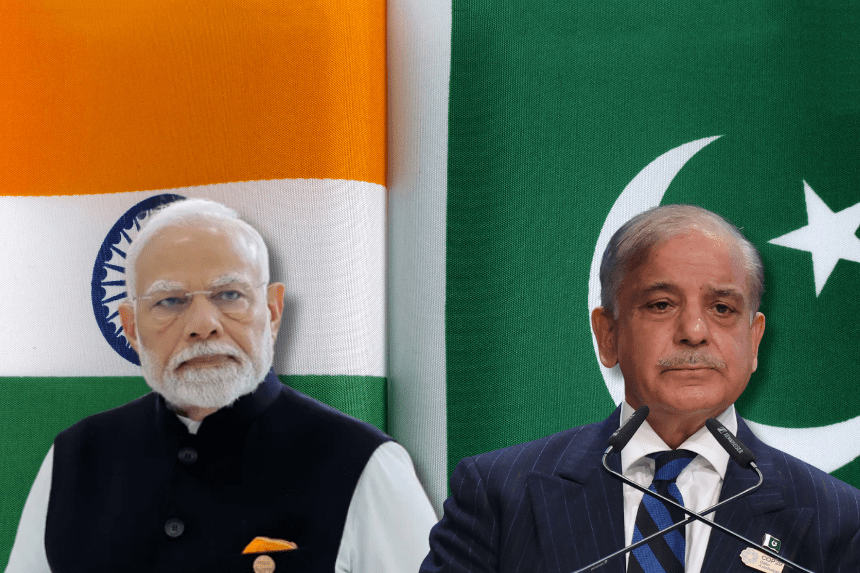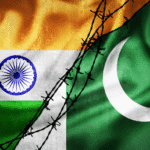For decades, the India-Pakistan Conflict has caused strife since both countries are embroiled in arguments over a territory claimed by each. Over the years, the conflict has caused several wars, skirmishes, and rising tensions. Following a lethal militant strike in Indian-administered Kashmir, this long-standing conflict has lately seen a marked rise. India responded by attacking militant camps based in Pakistan, which set off a sequence of military interactions between the two nuclear-armed nations. A US-brokered truce gave a brief respite from conflict as the situation grew desperate. This page explores the reasons behind the India-Pakistan Conflict, the events surrounding the most recent escalation, and the consequences of the ceasefire deal.
- Why did the India-Pakistan Conflict's most recent escalation start?
- What effects on the India-Pakistan Conflict did the Ceasefire Agreement bring?
- What consequences, regionally, does the India-Pakistan Conflict have?
- What Future Calls India and Pakistan?
- In essence, is the conflict between India and Pakistan resolved?
Why did the India-Pakistan Conflict's most recent escalation start?
The most recent flare-up in the India-Pakistan Conflict may be traced back to a vicious militant attack on 22 April in Indian-administered Kashmir, killing 26 people. Though Pakistan denied any participation, India quickly accused a militant cell headquartered in Pakistan of planning the attack. India conducted airstrikes on militant camps run under control by Pakistan and Kashmir after the attack. India responded to what it saw as a direct challenge to its security and sovereignty.
Retaliation from Pakistan, claiming to have hit Indian military bases in reprisal, greeted these airstrikes. As both India and Pakistan fired across the Line of Control (LoC), the official border between them in Kashmir, the conflict between them grew more intense. Every side charged the other with breaking ceasefire rules and launching cross-border artillery. India also claimed to have shot down Pakistani drones and aircraft, supposedly trying to enter Indian territory. Soldiers and citizens caught in the crossfire suffered on both sides of this fight.
As each side vowed to defend its territorial integrity, the situation got more precarious. Once more, the India-Pakistan Conflict attracted worldwide attention, and given both nations’ nuclear capacity, the international community worried that the bloodshed might get out of hand.
What effects on the India-Pakistan Conflict did the Ceasefire Agreement bring?
The United States arranged a ceasefire following three days of heavy bombardment, aircraft incursions, and strikes on military installations. As it offered a brief break from bloodshed, this accord was a pivotal turning point in the India-Pakistan Conflict. While both countries declared military successes, they committed themselves to peace; India and Pakistan agreed to cut military operations near their borders.
Though momentarily successful, the truce did not address the fundamental problems driving the India-Pakistan Conflict for decades. Still hanging over their relationship are the Kashmir conflict, terrorism, and the nuclear weapons race between the two nations. Although both nations seemed to recognize the importance of peace, doubts over the long-term success of the ceasefire still exist. The fundamental issue is whether both countries are ready to participate in substantive diplomatic negotiations aiming at resolving the underlying causes of the conflict.
Usually, ceasefires between India and Pakistan have been fleeting in history. Once hostilities have stopped, both parties have discovered it difficult to maintain the peace process. Deep-rooted frustrations have always propelled the India-Pakistan Conflict; so, every ceasefire agreement faces the danger of disintegrating without addressing these problems. But this time, the international community is hoping that the brief stop in hostilities would open the path for more meaningful negotiations. Read another article on the India-Pakistan Kashmir Dispute
What consequences, regionally, does the India-Pakistan Conflict have?
There are major regional security ramifications from the India-Pakistan conflict. Both countries are nuclear-armed, hence any further escalation can have disastrous effects not just for India and Pakistan but also for world stability. The latest fight, which included bombings on residential areas and military sites, underlined the always existing risk associated with a major war.
One of the primary worries still is the possibility of nuclear conflict. India and Pakistan have built nuclear arsenals, hence any military escalation can cause a disastrous outcome. The world community has consistently urged both countries to prioritize diplomacy over armed action and to exercise moderation from both sides. The stability of South Asia is directly threatened by the India Pakistan Conflict, therefore upsetting the global order as well.
The fundamental problems still exist even if the truce offers some relief. Tensions still run strong and both countries keep a strong military presence along their borders. Sustained diplomatic efforts are necessary to solve the underlying causes of the India-Pakistan Conflict, including the Kashmir issue and the matter of cross-border terrorism, therefore enabling sustainable peace to rule.
Furthermore, the conflict has regional consequences beyond India and Pakistan. Afghanistan and China, among the neighboring nations, have attentively watched the situation since the stability of South Asia directly affects the larger geopolitical scene. With consequences perceived worldwide, a full-scale war between India and Pakistan may destabilize the whole area.
What Future Calls India and Pakistan?
The India-Pakistan Conflict’s future mostly hinges on both countries’ willingness to participate in diplomatic communication. Although the ceasefire offers a window of possibility for negotiations, it is yet unknown if this results in a long-lasting peace. India and Pakistan have indicated their preparedness to protect their sovereignty against further assaults. Still, given that both countries are on high alert, there is always a risk of more military interactions.
The whole community has to keep pushing India and Pakistan toward peaceful answers since the results of further escalation would be terrible. Major world powers, including Russia, China, and the United States, have to actively help India and Pakistan to communicate. Using this diplomatic intervention, future flare-ups could be avoided, and the India-Pakistan Conflict is guaranteed not to turn into a full-scale war.
Although both countries have stated they want peace, there are many difficult roads ahead. Both India and Pakistan have stayed firmly in their positions after decades of conflict. Both sides will have to make tough compromises and acknowledge their sovereignty if a long-lasting settlement is to result. Achieving long-lasting peace also depends critically on tackling problems, including the Kashmir conflict, cross-border terrorism, and water rights.
In essence, is the conflict between India and Pakistan resolved?
One of the most serious geopolitical conflicts in the world is the India-Pakistan conflict. Although the latest truce provides a brief respite from bloodshed, it does not deal with the fundamental causes driving the war. Both countries have to aim for a long-term peace accord, focusing on issues like Kashmir and terrorism, if they are to stop further escalation.
Only through communication, diplomacy, and a dedication to peaceful cohabitation can a long-lasting answer be feasible. Given the enormous stakes for both India and the larger international community, the world ought to remain alert and assist initiatives toward a peaceful resolution to the India-Pakistan Conflict.
Though the India Pakistan Conflict is far from done, the latest truce gives optimism for the future. But both India and Pakistan have to commit to diplomacy and cooperate to solve the difficult problems that have kept them at conflict for so long if peace is to rule. Both countries can reach the peace and stability their people so sorely deserve only by working together and with mutual respect.








